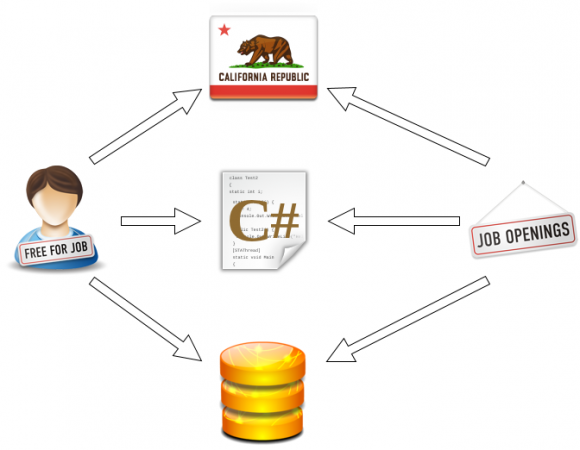Max De Marzi, Graph Database enthusiast, shows how a job candidate and a job post finds one another using Neo4j and Cypher.
Does your search know about your user? Does it know what your user has permissions to see? How does it tie into personalized recommendations? Does it take advantage of the things we already know about a user? It’s this last question that’s most important, and I want to show you how you can use a graph database like Neo4j to help your users find what they want differently. Pretend you are looking for a job. Think of the things you put on your resume. Your location, your education, your work history, your skills, your references, etc. Now pretend you ARE a job post. Yes, I know I am asking you to be an inanimate object. Just give it a shot. What do you want in a candidate? Someone near your location, with a certain level of education, and mix of skills, preferably vetted by someone you respect, etc. Both the job candidate and job post are thinking about the same things, but if you look at a resume and a job description, you will realize they aren’t speaking the same language. Why not? It’s so obvious it has been driving me crazy for years and was one of the reasons I built Vouched and got into this Graph Database stuff in the first place. So let’s solve this problem with a graph. I am going to make Candidates and Job Posts speak the same language by connecting them to location and skill nodes. I am keeping things simple, anything that has some relationship to both people and job posts could be used. Mary lives in California, knows C# and knows PostgreSQL. There is a job post that requires a candidate be in California, know C# and know PostgreSQL. We connect these two together in our graph like so:
Keywords: Job Hunting • Max De Marzi • Recommendation Engine